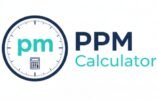In hydroponics, where plants grow without soil, PPM (parts per million) helps growers track the concentration of nutrients dissolved in water.
It’s one of the most important numbers you’ll deal with—right next to pH and temperature.
Why PPM Matters in Hydroponics
PPM is more than just a number—it’s a window into your hydroponic system’s health. It tells you how strong your nutrient solution is and helps you make smart decisions to avoid overfeeding or underfeeding your plants.
Start by learning your crop’s ideal ranges, measuring regularly, and adjusting with care. Over time, you’ll begin to recognize patterns and fine-tune your growing style.
Think of PPM as a measure of how much “food” your plants are getting through the water. Too little and they’re underfed. Too much and they risk nutrient burn. Understanding how to read, adjust, and manage PPM is essential if you’re serious about growing healthy crops in a soilless setup.
If you’re just getting started, this guide will explain how PPM works, how to measure it, and what the right levels look like for different types of plants.
What Is PPM in Simple Terms?
PPM = parts per million. In hydroponics, this usually means milligrams of nutrients per liter of water.
For example:
- A reading of 800 PPM means there are 800 mg of dissolved solids (nutrients, salts, etc.) in each liter of your water solution.
PPM is typically measured using TDS (total dissolved solids) or EC (electrical conductivity) meters. These tools help you estimate how strong your nutrient mix is.
➡️ Try our TDS to PPM Calculator or EC to PPM Calculator to convert readings based on your meter’s calibration.
How to Measure PPM in Your Nutrient Solution
Tools You’ll Need
- TDS or EC meter – Easy to use, handheld devices that give instant readings.
- Clean water – Start with distilled or filtered water for accuracy.
- Nutrient solution – Your fertilizer mix.
Step-by-Step
- Fill your reservoir with clean water.
- Add nutrients according to your feeding schedule.
- Stir and stabilize the solution.
- Dip the TDS or EC meter into the mix.
- Read the display, which shows either PPM or EC.
Most TDS meters use a conversion factor from EC (e.g., 0.5 or 0.7). That’s why the same water can show different PPMs on different devices. You can estimate or correct this using the PPM to Microsiemens Calculator.
Ideal PPM Ranges for Common Hydroponic Crops
| Growth Stage | Ideal PPM Range |
|---|---|
| Seedlings | 100–250 PPM |
| Clones | 250–350 PPM |
| Vegetative (Leafy growth) | 400–800 PPM |
| Flowering | 900–1400 PPM |
| Final weeks before harvest | 400–600 PPM (Flush zone) |
Crop-Specific Examples
- Lettuce: 560–840 PPM
- Tomatoes: 1400–3500 PPM
- Spinach: 1260–1610 PPM
- Herbs: 560–1120 PPM
These values are general estimates. Always monitor your plants’ health and adjust based on observation. For precise feeding, use our Fertilizer PPM Calculator or Nutrient PPM Calculator.
Adjusting PPM Levels Safely
Lowering PPM
- Add more plain water to dilute the solution.
- Avoid tap water if it already has a high mineral count.
Raising PPM
- Mix in small amounts of concentrated nutrients, stir, then retest.
- Go slow — a big jump in PPM can stress roots or burn plants.
Pro Tip: After adjusting, let the solution stabilize for 15–30 minutes before measuring again.
Signs Your PPM Is Off
Low PPM Symptoms
- Yellowing leaves
- Stunted growth
- Weak stems
High PPM Symptoms
- Leaf tip burn
- Wilting (even with plenty of water)
- Crusty residue on media or equipment
If you’re seeing any of these, confirm with your meter and make adjustments. You can also consult our guide: PPM Calculator for Water Testing.
Other Factors That Influence PPM Accuracy
- pH levels affect nutrient absorption. Maintain between 5.5–6.5 for most crops.
- Water temperature impacts solubility and meter accuracy.
- Light intensity can change how fast plants consume nutrients.
Always measure PPM after pH adjustment, and at the same time each day for consistency.
